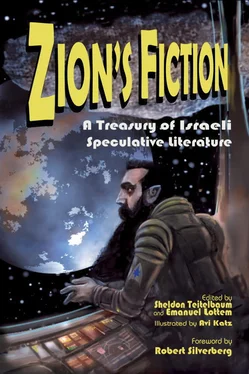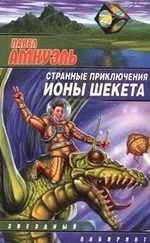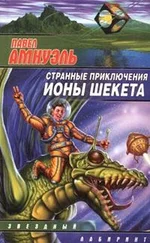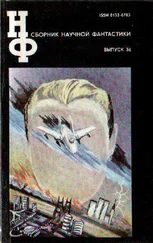—Jack Dann, award-winning author and editor of over 75 books including
The Memory Cathedral and
The Silent
“The basic joy in science fiction and fantasy is the chance to look inside minds different from your own. Here’s your chance. Some bright minds in the nation of Israel have been exercising their imaginations, sharing their different dreams and nightmares, and the results are ours to enjoy.”
—Larry Niven, a multiple Hugo and Nebula Award-winning author of
The Ringworld Series

Mandel Vilar Press
Copyright © 2018 by Mandel Vilar Press
All rights reserved. No portion of this book may be reproduced in any form or by any means, including electronic storage and retrieval systems, except by prior written permission of the publisher. Brief passages excerpted for review and critical purposes are excepted.
“Foreword” by Robert Silverberg, © 2018 Robert Silverberg; “Introduction” © 2018 Sheldon Teitelbaum and Emanuel Lottem; “The Smell of Orange Groves” by Lavie Tidhar, © 2011 Lavie Tidhar; “The Slows” by Gail Hareven, translated by Yaacov Jeffrey Green, © 1999 Gail Hareven; “Burn Alexandria” by Keren Landsman, translated by Emanuel Lottem, © 2015 Keren Landsman; “The Perfect Girl” by Guy Hasson, © 2004 Guy Hasson; “Hunter of Stars” by Nava Semel, translated by Emanuel Lottem, © 2009 Nava Semel’s estate; “The Believers” by Nir Yaniv, © 2007 Nir Yaniv; “Possibilities” by Eyal Teler, © 2003 Eyal Teler; “In the Mirror” by Rotem Baruchin, translated by David Chanoch, © 2007 Rotem Baruchin; “The Stern-Gerlach Mice” by Mordechai Sasson, translated by Emanuel Lottem, © 1984 Mordechai Sasson’s estate; “A Good Place for the Night” by Savyon Liebrecht, from A Good Place for the Night , translated by Sondra Silverston, © 2006 by Savyon Liebrecht, reprinted with the permission of Persea Books, Inc. (New York), www.perseabooks.com, all rights reserved; “Death in Jerusalem” by Elana Gomel, © 2017 Elana Gomel; “White Curtain” by Pesakh (Pavel) Amnuel, translated by Anatoly Belilovsky, © 2007 Pesakh (Pavel) Amnuel; “A Man’s Dream” by Yael Furman, translated by Nadav Almog, © 2006 Yael Furman; “My Crappy Autumn” by Nitay Peretz, translated by Emanuel Lottem, © 2005 Nitay Peretz; “Two Minutes Too Early” by Gur Shomron, © 2003 Gur Shomron; “They Had to Move” by Shimon Adaf, translated by Emanuel Lottem, © 2008 Shimon Adaf; “Afterword” by Aharon Hauptman, © 2018 Aharon Hauptman
This book is typeset in Alegreya. The paper used in this book meets the minimum requirements of ANSI/NISO Z39-48-1992 (R1997). 
Publisher’s Cataloging-In-Publication Data
Names: Teitelbaum, Sheldon, editor. | Lottem, Emanuel, editor. | Katz, Avi, illustrator. | Silverberg, Robert, writer of supplementary textual content. | Hauptman, Aharon, writer of supplementary textual content.
Title: Zion’s fiction: a treasury of Israeli speculative literature / edited by Sheldon Teitelbaum and Emanuel Lottem; foreword by Robert Silverberg; afterword by Aharon Hauptman; illustrations by Avi Katz.
Description: Simsbury, Connecticut: Mandel Vilar Press, [2018] | “The stories come from Hebrew, Russian, and English-language sources.”—Provided by publisher. | Includes bibliographical references.
Identifiers: ISBN 9781942134527 | ISBN 9781942134534 (ebook)
Subjects: LCSH: Israeli fiction (English) | Fantasy fiction, Israeli. | Speculative fiction. | Science fiction. | Short stories, Israeli.
Classification: LCC PR9510.8.Z56 2018 (print) | LCC PR9510.8 (ebook) | DDC 823/.010895694—dc23
Printed in the United States of America.
18 19 20 21 22 23 24 25 / 9 8 7 6 5 4 3 2 1
Mandel Vilar Press
19 Oxford Court, Simsbury, Connecticut 06070
www.mvpress.org
First coined by M. F. Egan and subsequently espoused by Lloyd Arthur Eshbach and Robert A. Heinlein, the term speculative fiction was generally intended to deemphasize the technological aspects of a great deal of earlier science fiction. Heinlein defined the term as a subset of SF involving extrapolation from known science and technology “to produce a new situation, a new framework for human action.”
Horror, currently referred to as dark or weird fantasy, is a rarity in Israeli speculative fiction, although a few, among them Asaf Ashery and Orly Castel-Bloom, have valiantly tried their hands at it. Many Israelis will argue that they live with enough daily horror to avoid subjecting themselves to additional, imaginary torments.
Quoted in Michael Weingrad, “Riding Leviathan: A New Wave of Israeli Genre Fiction,” Jewish Review of Books , Winter 2014, http://jewishreviewofbooks.com/articles/602/riding-leviathan-a-new-wave-of-israeli-genre-fiction. Yanai would subsequently set matters aright with the publication of two unabashed fantasy novels, HaLivyatan MiBavel (The leviathan of Babylon, 2006) and HaMayim shebein HaOlamot (The water between the worlds, 2008).
Danielle Gurevitch, “What Is Fantasy?” in With Both Feet on the Clouds: Fantasy in Israeli Literature , edited by Danielle Gurevitch, Elana Gomel, and Rani Graff (Brighton, MA: Academic Studies Press, 2012), 13.
Adam L. Rovner, In the Shadow of Zion: Promised Lands before Israel (New York: NYU Press, Kindle Edition, 2014), Kindle Location 161 of 8224, retrieved from Amazon.com.
Gail Hareven, “What Is Unimaginable?” in With Both Feet on the Clouds , 45.
Usually, this is rendered in English as “If you will it, it is no dream.” Herzl, however, used the German word Märchen , fairy tale.
Leon Uris’s protagonist, Ari Ben Canaan (Exodus), was a feeble caricature of this idealized image.
See Jeff Vandermeer and Jeremy Zerfoss, Wonderbook: The Illustrated Guide to Creating Imaginative Fiction (New York: Abrams Image, 2013).
Some cases in point for this kind of bowdlerism include a 1938 translation of Lawrence’s Lady Chatterley’s Lover with no sex scenes and a 1924 translation of Wallace’s Ben Hur from which all references to Jesus and Christianity (including, of course, the subtitle, A Tale of the Christ ) were carefully expunged.
Nachman Ben-Yehuda, “Sociological Reflections on the History of Science Fiction in Israel,” Science Fiction Studies 13 (1986): 75.
Quoted in Oren Tokatly, Mediniyut Tikshoret beIsrael [Communications policy in Israel] (Tel Aviv: Open University Publishing House, 2000), 85.
Elana Gomel, “What Is Reality?” in With Both Feet on the Clouds , 33. The term Mizrahi applies to Jews from Middle Eastern countries, many of whom are able to trace their lineage to the Babylonian dispersion, not to be confused or conflated with Sephardic Jews, whose forefathers had lived in Spain and Portugal for centuries prior to their expulsion in 1492 and 1496, respectively, and who generally dispersed southward and eastward. In fact, these are two distinct subcultures.
Читать дальше








